7 archaeological sites of Lima
Lima is a Peruvian coastal region where various pre-Hispanic cultures settled more than 5,000 years ago. Important cultures such as the Ychma, the Lima, the Wari and, of course, the Incas also settled there. These cultures left architectural traces in the Lima territory. The two most famous are definitely the sanctuaries of Pachacamac and Caral. Get to know seven archaeological sites located in the Lima region.
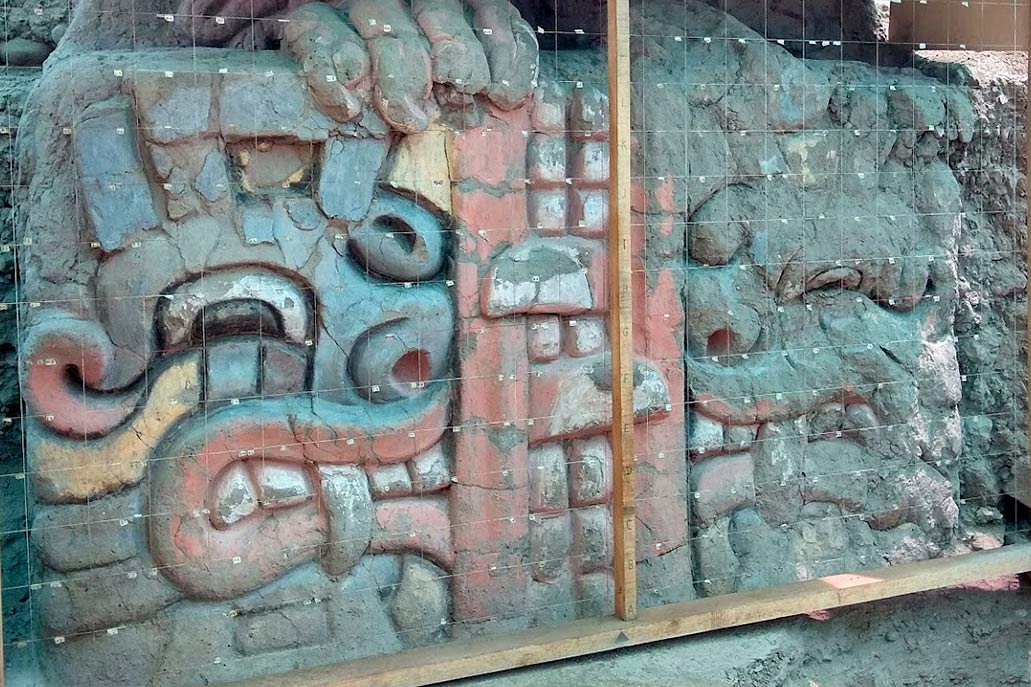
Contenido
The Sanctuary of Pachacamac
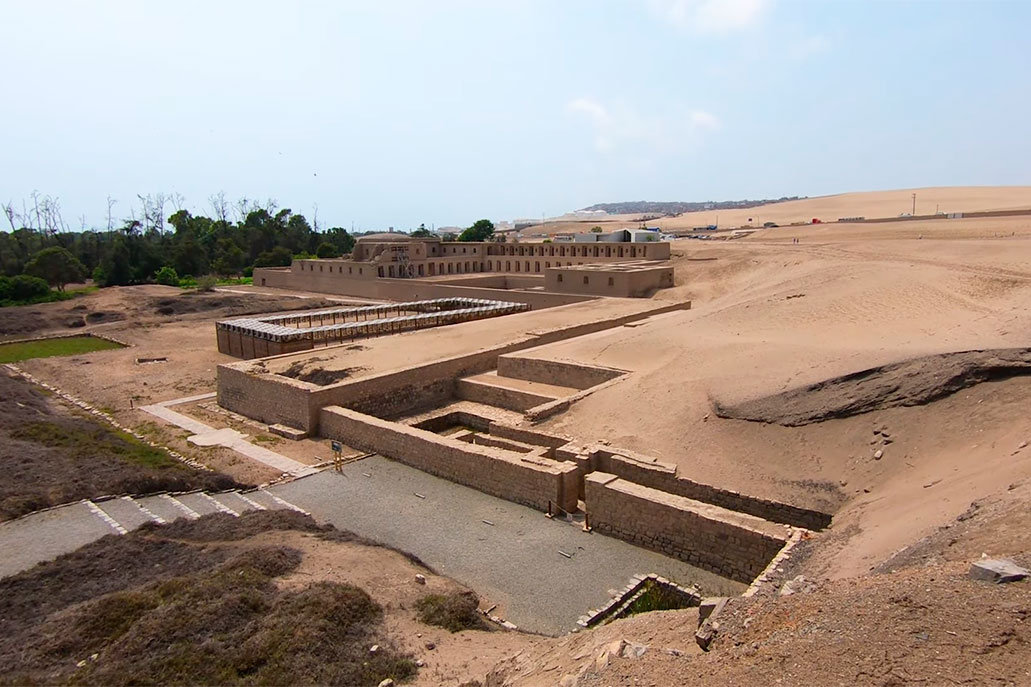
The Sanctuary of Pachacamac was a sanctuary of great importance for the Incas and the cultures that preceded them: the Wari and Ichma. It stands out for constructions such as the Temple of the Sun, the Temple of the Moon, the Acllahuasi and more. With the arrival of the Spanish in 1533, the treasures were stolen and part of their structures were destroyed.
Today Pachacamac is one of the most famous archaeological sites in all of Lima. It is in the Lurín Valley, 38 kilometers from the city center. The hours of operation are from Monday to Saturday from 9 in the morning to 5 in the afternoon. The tour includes a visit to its site museum. You can add the tour guide service at the entrance door.
- Location: Kilometer 31.5 of the old Panamericana Sur, Lima.
- Entrance fee: Adults 15 soles, university students 5 soles, minors 1 sun and children under 3 years free.
The Pucllana Huaca
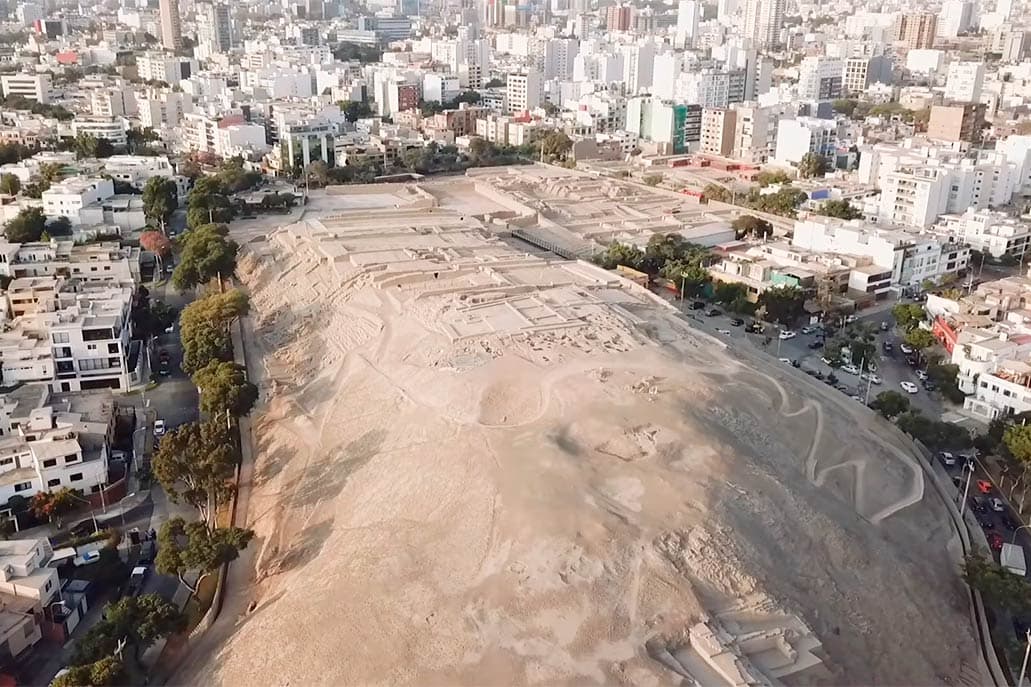
Huaca Pucllana is famous for being located in the Miraflores district, in the heart of the city of Lima. Also for the beauty of its squares, stairs, temples and enclosures. It was built by the Lima culture, between 200 and 700 AD Later it was also occupied by other cultures such as the Wari and Ichma.
Today the huaca Pucllana offers a beautiful infrastructure with a restaurant area, a handicraft shop and even a site museum where research work continues. The Peruvian authorities declared it Cultural Heritage of the Nation in 2017. Its hours of operation are from Monday to Saturday from 9 in the morning to 3:30 in the afternoon.
- Location: Block 8 of General Borgoño Street, Miraflores – Lima city.
- Entrance fee: Adults 15 soles, students 7.50 soles and children under 5 years old free admission.
Archaeological complex of Puruchuco

In the district of Ate Vitarte is this archaeological site of Inca origin. It is also called as ‘The Palace’ because it was the residence of the Inca curaca of that territory. It stands out for its good state of conservation. It has enclosures, squares, paths, walls and more. Its name, of Quechua origin, means ‘Feathered Helmet’.
Today the archaeological site of Puruchuco has a site museum (the first of its kind in Lima). Due to its good state of conservation, there are cultural events that include light and sound shows. The hours of operation are Tuesday to Sunday from 9 in the morning to 4 in the afternoon.
- Location: Cerro Mayorazgo, Avenue Javier Prado Este 8579, Ate Vitarte – Lima.
- Entrance fee: Adults 5 soles, university students 2 soles and children 1 sol.
Archaeological complex of Mateo Salado
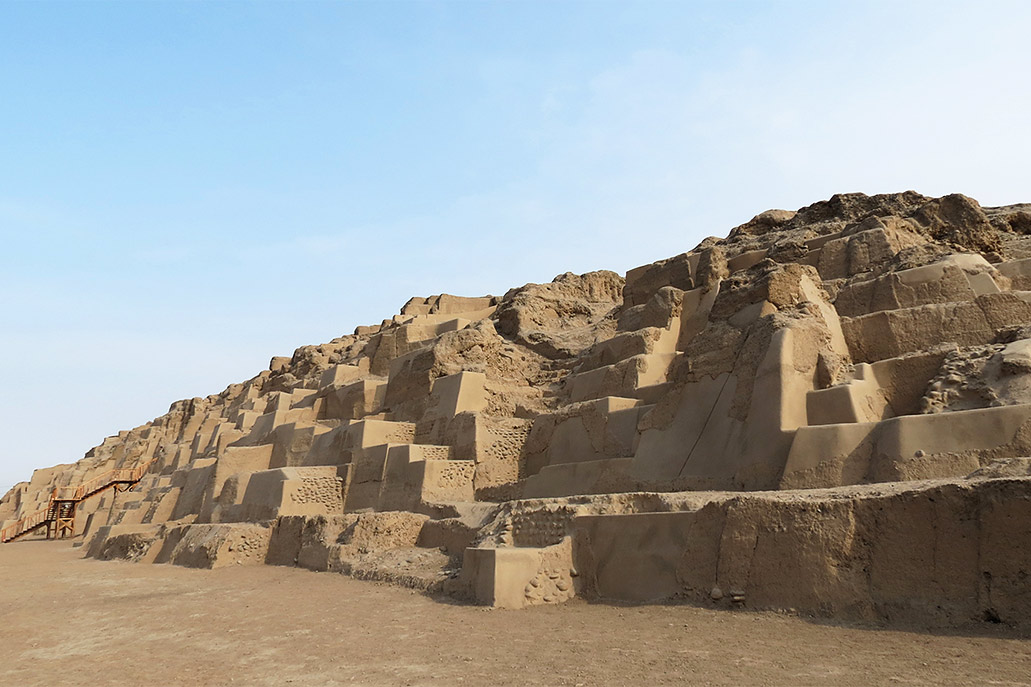
Mateo Salado is one of the largest and most important huacas in the city of Lima. It is made up of seventeen hectares that link the districts of Breña, Cercado de Lima and Pueblo Libre. It is a ceremonial center built by the Ychma culture (in the 11th century AD). It stands out for its stepped pyramids.
The name of this archaeological site honors the French hermit Matheus Salade who inhabited these ruins in the 16th century (for his religious beliefs he was condemned to the stake in 1573). The site is close to other huacas such as Maranga. The hours of operation are Thursday, Friday and Saturday from 10 in the morning to 3 in the afternoon.
- Location: Intersection of Palmeras street with Las Dalias street, Cercado de Lima.
- Entrance fee: Adults 10 soles, students 5 soles and school children 1 sol.
The huaca Huantille
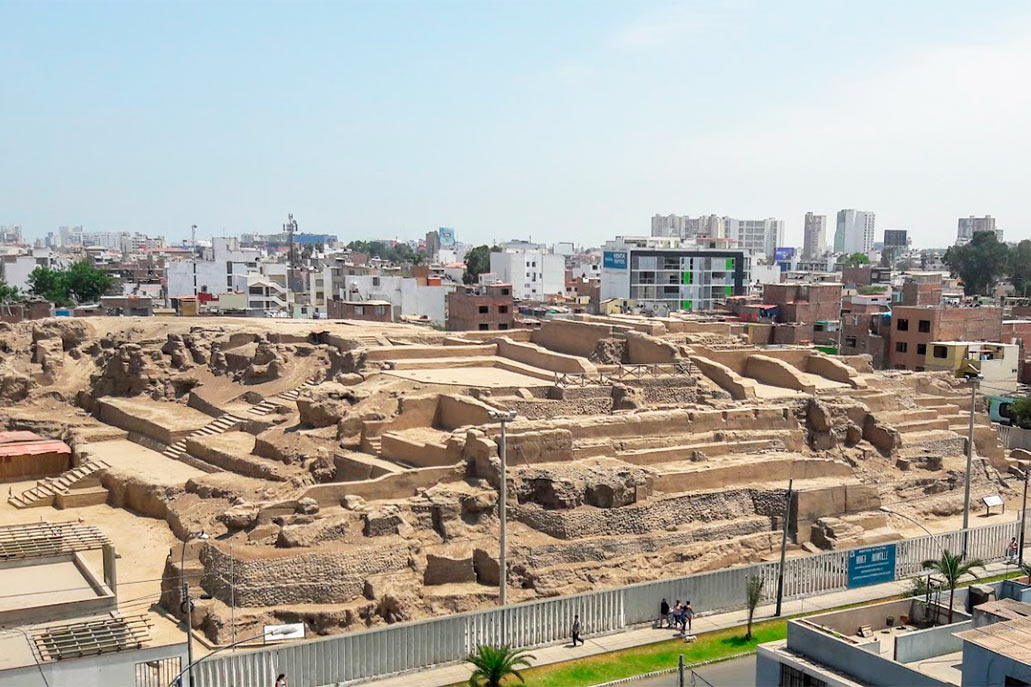
Huantille is an important huaca located in the district of Magdalena del Mar. It was occupied by the Ychma culture (900 AD) and the Incas (1,500 AD). In 2006, the enhancement work began after the informal occupation by land invaders. She is the only survivor of a set of five huacas.
The huaca Huantille is made up of overlapping platforms in a pyramidal shape. There have been stoves where offerings of animals such as guinea pigs and camelids were made. Its walls were decorated with geometric designs in low relief. It also has stairways, enclosures, patios and squares. Visiting hours are Monday through Friday from 8 in the morning to 4 in the afternoon.
- Location: Jirón Mariscal Castilla block 12 (intersection with Huamanga street).
- Entrance fee: Free admission.
The archaeological zone of Garagay
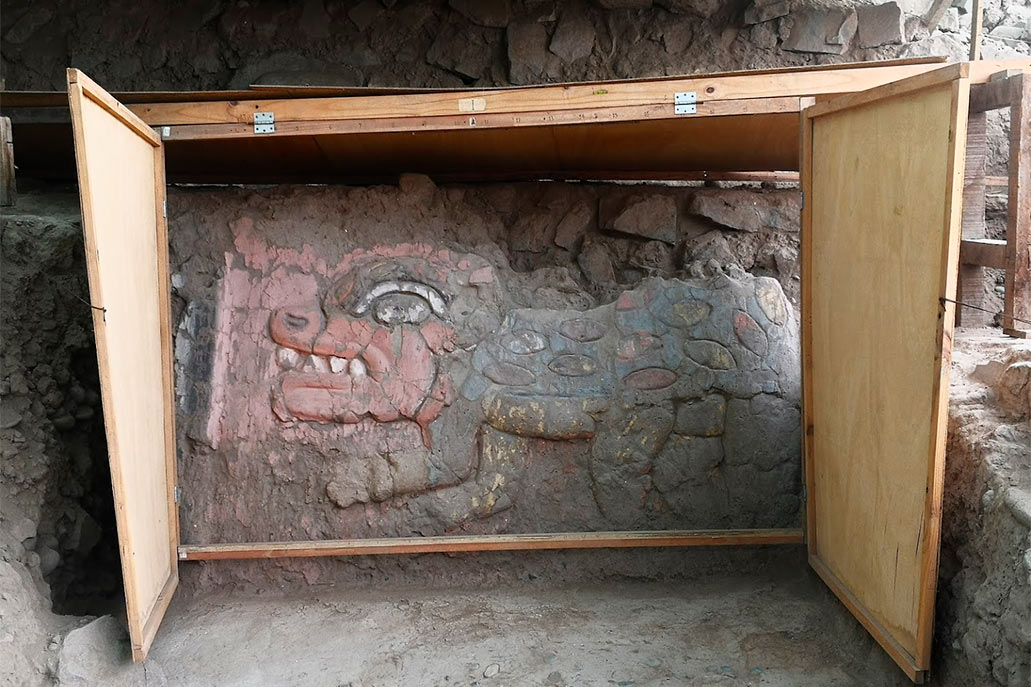
In the San Martín de Porres district of Lima, this archaeological site is famous for its 22 hectares and buildings in the shape of a ‘U’ as well as for its high reliefs representing the jaguar god. Research indicates that part of its constructions date back to 3.00 years ago. Due to its poor state of conservation, visits are not allowed.
Its name is due to the fact that it is located in what used to be the Garagay Alto farm. Its polychrome reliefs belong to the Chavín culture (400 BC). Ceramics and textiles hundreds of years old were also discovered. Unfortunately part of its walls were destroyed throughout the 20th century.
- Location: Avenue Eduardo Barnard (El Pacífico urbanization), San Martín de Porres – Lima.
- Entrance fee: Free after coordination with district authorities.
The sacred city of Caral
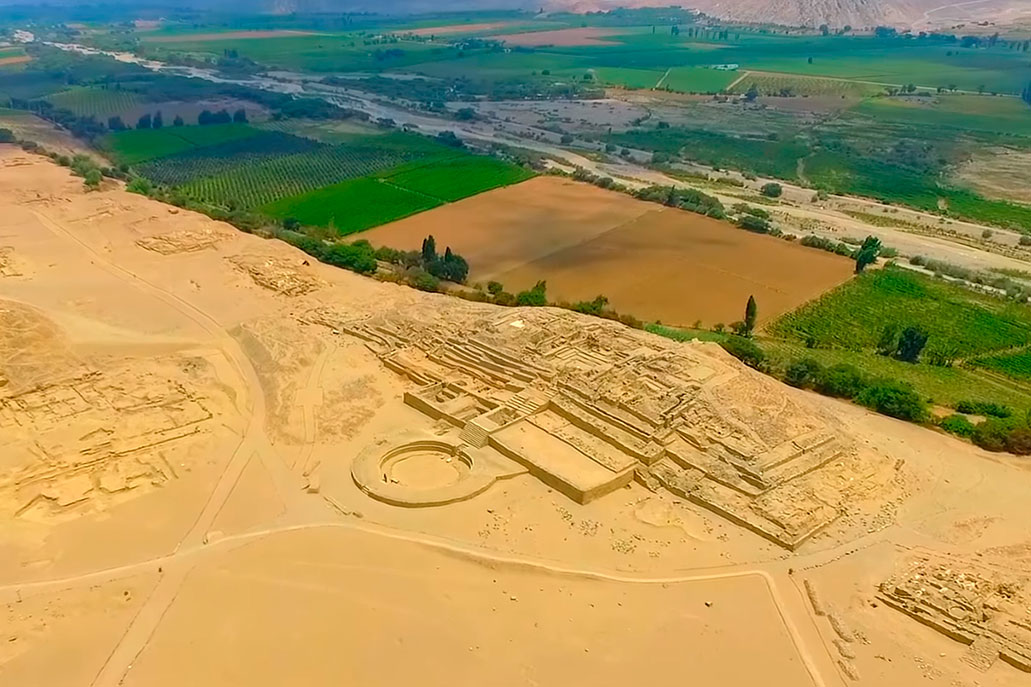
Caral is one of the most visited archaeological sites in the Lima region. The reason is that it is the oldest city in America. Its antiquity dates back to the 5th century BC. It covers a huge area of 626 square kilometers. There are pyramids, squares, roads, streets, royal residences, minor residences and more.
In 2009 Caral was declared a Cultural Heritage of Humanity by Unesco. Investigations continue to reveal important discoveries related to the Caral culture, which lived there more than 5,000 years ago. Visiting hours are from Monday to Sunday from 10 in the morning to 5 in the afternoon.
- Location: Kilometer 184 of the Panamericana Norte, Barranca – Lima.
- Entrance fee: Adults 11 soles, students 4 soles, children 1 soles and over 60 years 5 soles.
By Machupicchu Terra – Last updated, August 28, 2023